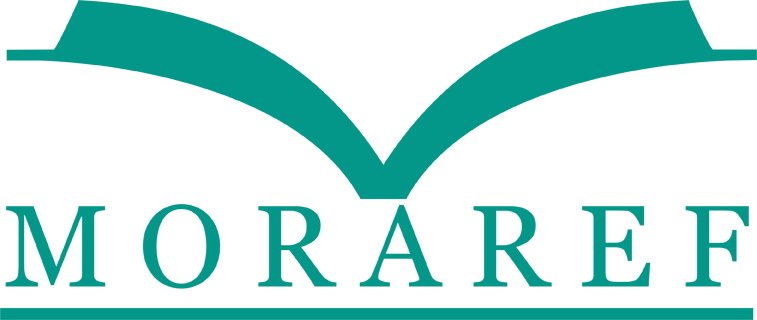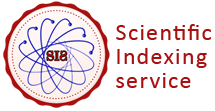Evaluation on Correlation of Gender and Age towards Toothbrushing Knowledge Among Primary School Students
Abstract
Observation of the level of knowledge is the first step to determine a student's understanding to the basic concepts of a practice. Early assessment of dental health knowledge of children will lead to big contribution to good dental health in future. However, few evaluations of children in different geographic regions regarding genders and age so as to equally treated with dental health strategies. The aim of this study was to explore the level of knowledge and evaluate whether there was a correlation between gender and age to the level of dental health knowledge in terms of toothbrushing in Sangkaragung, Bali. The method of this study was descriptive analytics with total sampling as much as 51 students in grade IV and V SD N 1 Sangkaragung. The evaluation of gender, age and its correlation to the knowledge level of in terms of toothbrushing procedure was performed with statistical analysis of chi-square test. The instrument used questionnaire to ace the level of knowledge with the final result in good, fair and bad criteria. The results shows that p-value is 0,281 which is more than significance 0,05 for the gender. Meanwhile for age, the result of p-value is 0,042 (p-value <0,05). In conclusion, there is no correlation between gender and the level of knowledge of dental health toothbrushing, however, age and of dental health toothbrushing knowledge is correlated among students in SD N 1 Sangkaragung.
Keywords
Full Text:
PDFReferences
N. Fraihat, S. Madae’En, Z. Bencze, A. Herczeg, and O. Varga, “Clinical effectiveness and cost-effectiveness of oral-health promotion in dental caries prevention among children: Systematic review and meta-analysis,” International Journal of Environmental Research and Public Health, vol. 16, no. 15. MDPI AG, Aug. 01, 2019. doi: 10.3390/ijerph16152668.
D. Septiani, D. Sughesti, D. Susanti, M. T. P. Sihombing, and S. Novitasari, “Pentingnya Menjaga Kesehatan Gigi dan Mulut Di Era Pandemi Covid’19, Demi Kelangsungan Aktivitas Usaha,” Dedikasi PKM, vol. 3, no. 1, pp. 56–66, 2022.
S. Saccomanno et al., “The importance of promoting oral health in schools: a pilot study,” Eur J Transl Myol, vol. 33, no. 1, Mar. 2023, doi: 10.4081/ejtm.2023.11158.
V. Reddy, D. Bennadi, S. Gaduputi, N. Kshetrimayum, S. Siluvai, and C. Konda Reddy, “Oral health related knowledge, attitude, and practice among the pre-university students of Mysore city,” J Int Soc Prev Community Dent, vol. 4, no. 3, pp. 154–158, Sep. 2014, doi: 10.4103/2231-0762.142012.
Melkisedek O. Nubatonis, “Dental Health Promotion Using Leaflet Media on Knowledge, Attitude and Dental Clean and Status of School of Elementary School of Kupang City,” Jurnal Info Kesehatan, vol. 15, no. 2, pp. 451–468, 2017.
H. R. Rahman, Susilarti, and D. Suyatmi, “Promosi Kesehatan Gigi Menggunakan Media Leaflet Terhadap Tingkat Pengetahuan dan Minat Perawatan Orthodonsi pada Siswa Sekolah Menengah Pertama,” Jurnal Gigi dan Mulut, vol. 1, no. 2, pp. 121–124, 2014.
P. RE and S. N. Tauchid, “Teaching Using The Demonstration Method at The Dental Brush Completely Compared to Leaflet and Poster Media on Score Debris Index Students on Classrooms Basic State Elementary School in South Jakarta,” in Simposium Nasional Ilmiah, 2019, pp. 29–45. doi: 10.30998/simponi.v0i0.550.
A. Anwar, N. Nursyamsi, A. Zulkifli, and A. Syam, “Effectiveness of Counseling With Cartoon Animation Audio Visual Methods In Increasing Tooth Brushing Knowledge Children Ages 10-12 Years,” European Alliance for Innovation n.o., Nov. 2019. doi: 10.4108/eai.26-10-2018.2288568.
E. Mardiati, Salikun, and K. Aprianti, “The Effectiveness Of Audio Media And Braille Leaflet Media On The Knowledge Of Maintaining Oral Hygiene Among Blind Children,” Jurnal Kesehatan Gigi, vol. 05, no. 1, 2018.
E. Gustina and M. Wibowo, “Improving Knowledge and Changing Health Attitude among Teenagers through Digital Media Flipbook,” Journal of Educational Science and Technology, vol. 6, no. 1, pp. 15–22, 2020.
E. Anggreni, R. Budiarti, and N. R. Suid, “The Use of ‘ KakAyu Dental Flipbook ’ in Oral Health Knowledge Improvement for Elementary School Students in Depok Penggunaan ‘ KakAyu Dental Flipbook ’ dalam Peningkatan Pengetahuan Kesehatan Mulut pada Siswa Sekolah Dasar di Depok,” Kesmas: National Public Health Journal, vol. 11, no. 47, pp. 163–167, 2017, doi: 10.21109/kesmas.v11i4.1299.
S. Salikun, S. Supriyana, S. Suwarsono, A. Kusmana, and Y. Setiadi, “Integrated Dental Health Monitoring using Smart Tooth Brush and Application,” Journal of Health and Medical Sciences, vol. 4, no. 4, pp. 73–80, 2021, doi: 10.31014/aior.1994.04.04.196.
M. C. Arias and D. W. McNeil, “Smartphone-based exposure treatment for dental phobia: a pilot randomized clinical trial,” J Public Health Dent, vol. 80, no. 1, pp. 23–30, Jan. 2020, doi: 10.1111/jphd.12340.
Sadhana Kandavel, Anita M, Vidhya Rehka U., and Sathyasri P, “Mobile Smartphone Apps Fororal Dental Health-Review Article,” European Journal of Molecular & Clinical Medicine, vol. 07, no. 2, p. 6755, 2020.
E. Nuriyah, I. S. Edi, and S. F. Ulfah, “Karies Gigi Ditinjau dari Pengetahuan Kesehatan Gigi dan Mulut pada Siswa Sekolah Dasar,” Indonesian Journal of Health and Medical , vol. 2, no. 2, pp. 167–179, 2022.
Z. Rehena, M. Kalay, and L. M. Ivakdalam, “Hubungan Pengetahuan dan Kebiasaan Menggosok Gigi dengan Kejadian Karies Gigi pada Siswa SD Negeri 5 Waai Kabupaten Maluku Tengah,” BIOSAINTEK, vol. 2, no. 2, pp. 1–5, 2020, doi: 10.52046/biosainstek.v2i2.467.1-5.
A. P. Kusuma and A. M. Taiyeb, “Gambaran Kejadian Karies Gigi pada Anak Kelas 2 Sekolah Dasar Negeri 20 Sungaiselan,” Media Kesehatan Politeknik Kesehatan Makassar, vol. 15, no. 2, Dec. 2020, doi: 10.32382/medkes.v15i2.1823.
G. Brod and Y. L. Shing, “Are there Age-Related Differences in the Effects of Prior Knowledge on Learning? Insights Gained from the Memory Congruency Effect,” Mind, Brain, and Education, vol. 16, no. 2. John Wiley and Sons Inc, pp. 89–98, May 01, 2022. doi: 10.1111/mbe.12320.
S. Jia, “A Study on the Influence of Age on Learning Effectiveness of English Second Language Learners,” in International Conference on Language, Art and Cultural Exchange (ICLACE 2022), 2022, pp. 74–84.
M. Murugi Njiru, M. Kimani, and B. Ngaruiya, “Correlate of Age Influence on Student’s Locus of Control and Attitude Towards Academic Achievement in Public Secondary Schools Nairobi County, Kenya,” International Academic Journal of Social Sciences and Education, vol. 2, no. 3, pp. 19–39, 2021, [Online]. Available: https://iajournals.org/articles/iajsse_v2_i3_19_39.pdf
M. T. Rajeh, “Gender Differences in Oral Health Knowledge and Practices Among Adults in Jeddah, Saudi Arabia,” Clin Cosmet Investig Dent, vol. 14, pp. 235–244, 2022, doi: 10.2147/CCIDE.S379171.
R. Ulfah and N. Kisworo Utami, “Hubungan Pengetahuan dan Perilaku Orang Tua dalam Memelihara Kesehatan Gigi dengan Karies Gigi pada Anak Taman Kanak-Kanak,” Jurnal Kesehatan Masyarakat, vol. 7, no. 2, pp. 146–150, 2020, [Online]. Available: https://ojs.uniska-bjm.ac.id/index.php/ANN/article/view/3927
N. Meshal, A. Rasheed, and A. C. Shetty, “Oral health knowledge among female primary school teachers in Riyadh city, Kingdom of Saudi Arabia,” ~ 164 ~ International Journal of Applied Dental Sciences, vol. 3, no. 4, pp. 164–170, 2017, [Online]. Available: www.oraljournal.com
S. Lestari and S. N. Solikah, “Description of Mother’s Knowledge Level in Stunting Prevention in Toodler Age Children in Kedungtungkul Mojosono Surakarta,” Intan Husada: Jurnal Ilmiah Keperawatan, vol. 10, no. 2, pp. 177–183, 2022.
J. Pontonuwu, N. W. Mariati, and D. A. Wicaksono, “Gambaran Status Karies Anak Sekolah Dasar di Kelurahan Kinilow 1 Kecamatan Tomohon Utara,” e-Gigi, vol. 1, no. 2, pp. 1–8, 2013.
A. Makuch, K. Reschke, and S. Rupf, “Effective Teaching of Tooth-brushing to Preschool Children,” J Dent Child, vol. 78, no. 1, pp. 9–12, 2011.
J. Laurent Citradi, I. Hatta, and A. Azizah, “The Effectiveness of the Roll Tooth-Brushing Technique Toward Gingival Health Status of Totally Blind People,” Dentino : Jurnal Kedokteran Gigi, vol. 7, no. 1, p. 1, 2022, doi: 10.20527/dentino.v7i1.13094.
Y. Tashiro, K. Nakamura, K. Seino, S. Ochi, H. Ishii, and M. Hasegawa, “The impact of a school-based tooth- brushing program on dental caries : a cross- sectional study,” Environ Health Prev Med, vol. 6, pp. 1–9, 2019.
E. E. Ajaegbu, C. U. Ezeh, A. J. Dieke, A. L. Onuora, and J. I. Ugochukwu, “Antimicrobial Efficacy of Toothpastes Containing Fluoride against Clinically Isolated Streptococci mutans,” Adv Res, no. September, pp. 19–24, 2020, doi: 10.9734/air/2020/v21i1030247.
M. Prasanth, “Antimicrobial Efficacy of Different Toothpastes and Mouthrinses : An In Vitro Study,” Dent Res J (Isfahan), vol. 8, no. 2, pp. 85–94, 2011.
F. N. Hugo, N. J. Kassebaum, W. Marcenes, and E. Bernabé, “Role of Dentistry in Global Health: Challenges and Research Priorities,” J Dent Res, vol. 100, no. 7, pp. 681–685, 2021, doi: 10.1177/0022034521992011.
N.P. Mery, “Pengaruh Umur, Jenis Kelamin dan Pengetahuan Terhadap Perilaku Anak Dalam Pemeliharaan Kebersihan Gigi dan Mulut Di Pusat Pengembangan Anak (Ppa) IO-641 Agape Sikumana Kota Kupang, Nusa Tenggara Timur ,” Jurnal Poltekkes Kupang, 2017.
R. C. Petersen, B. Caracciolo, C. Brayne, S. Gauthier, V. Jelic, and L. Fratiglioni, “Mild cognitive impairment: A concept in evolution,” J Intern Med, vol. 275, no. 3, pp. 214–228, 2014, doi: 10.1111/joim.12190.
D. Aranza et al., “Development and Initial Validation of the Oral Health Activities Questionnaire,” Int J Environ Res Public Health, vol. 19, no. 9, May 2022, doi: 10.3390/ijerph19095556.
R. Sfeatcu, B. A. Balgiu, C. Mihai, A. Petre, M. Pantea, and L. Tribus, “Gender Differences in Oral Health: Self-Reported Attitudes, Values, Behaviours and Literacy among Romanian Adults,” J Pers Med, vol. 12, no. 10, Oct. 2022, doi: 10.3390/jpm12101603.
E. A. Widyaningrum, W. Admaja, L. W. Astuti, and B. Masyriqoh, “Pengaruh Usia dan Jenis Kelamin Terhadap Pengetahuan serta Perilaku Penggunaan Suplemen si Masa Pandemi pada Mahasiswa Iik Bhakti Wiyata,” Majalah Farmasetika, vol. 1, pp. 49–59, 2021.
P. Agina Widyaswara Suwaryo and P. Yuwono, “Faktor-Faktor Yang Mempengaruhi Tingkat Pengetahuan Masyarakat dalam Mitigasi Bencana Alam Tanah Longsor,” in The 6 University Research Colloquium 2017, 2017, pp. 305–314.
S. Hidayat, E. D. Mumpuningtiasa, and P. S. Andriyani, “Tingkat Pengetahuan tentang Kesehatan Gigi Berhubungan dengan Perilaku Perawatan Gigi pada Anak Usia 10-12 Tahun,” Stomatognatic, vol. 17, no. 2, p. 3740, 2020.
F. Disty, Nuraini, and Okianna, “Pengaruh Lingkungan Belajar di Sekolah Terhadap Motivasi Belajar Siswa di SMK Negeri 1 Pontianak,” Jurnal Pendidikan dan Pembelajaran Khatulistiwa, vol. 7, no. 12, 2018.
N. Hidayah and Y. Hendriani Praptiwi, “Gambaran Tingkat Pengetahuan Kesehatan Gigi dan Mulut pada Orang Tua Anak Usia Prasekolah,” Jurnal Kesehatan Gigi dan Mulut, vol. 3, no. 3, pp. 11–17, 2021.
DOI: https://doi.org/10.31983/jkg.v10i2.10606
Article Metrics
Refbacks
- There are currently no refbacks.
| View My Stats |











.png)


.png)
.png)








